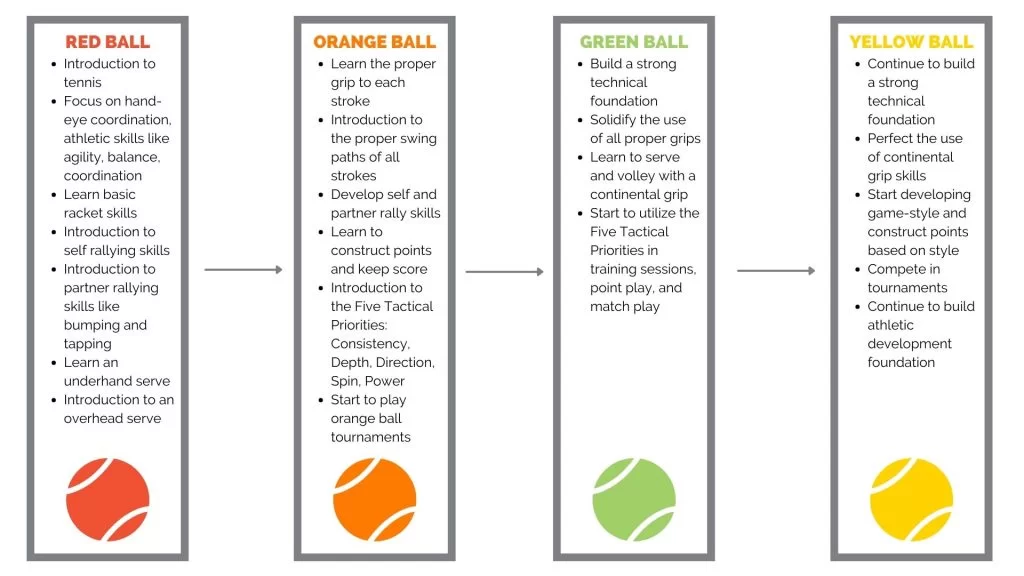In tennis, it’s a bit like life – we’re all on a trip to elevate ourselves. Whether you’re picking up a racket for the first time or you’ve been serving aces for years, there’s something exciting called ‘Dynamic Tennis Ratings’ that can give your game a boost. So, think of this guide as your friendly tour guide into the world of Dynamic Tennis Ratings., let’s dive right into it! We’ll chat about what are, how they work (nothing too complicated, promise!), and why they’re like those fantastic insider tips that can make your journey so much more enjoyable.
Understanding Dynamic Tennis Ratings
Dynamic Tennis Ratings, often abbreviated as DTR, are a numerical representation of a player’s skill and performance level. These ratings serve as a benchmark, allowing players to assess their progress, compete against similarly skilled opponents, and set realistic goals for improvement. Think of it as your tennis report card – a dynamic, ever-evolving measure of your game.
The Core Elements of Dynamic Tennis Ratings

To truly grasp the power of Dynamic Tennis Ratings, it’s crucial to understand the core elements that make up this system:
1. Continuous Assessment: Unlike static ratings that remain stagnant, DTR is dynamic, constantly adjusting based on your performance. It takes into account factors like wins, losses, the caliber of opponents, and even the margin of victory.
2. Precision: DTR is remarkably precise, often represented with decimals, which means it can distinguish between players of very similar skill levels. This precision is invaluable in matching players for competitive, evenly-matched games.
3. Universal Application: Dynamic Tennis Ratings are not confined to a specific league or tournament. They can be applied across different tennis organizations, making it easier to compare your skill level with players from various backgrounds.
4. Goal Setting: With a clear DTR, you can set achievable goals. Whether you aim to improve your rating, maintain it, or compete at a higher level, DTR provides a tangible target.
How Dynamic Tennis Ratings Work
Tennis Ratings uses a mathematical algorithm that considers various factors to calculate your current skill level. Here’s a plain crackup of how it works:
1. Match Payoff: The leading factor is whether you win or lose a match. If you win against a higher-rated opponent, your rating will increase more than if you beat someone with a lower rating.
2. Margin of Victory: If you win with a large point margin, it reflects positively on your rating, indicating a potentially greater skill gap.
3. Opponent’s Rating: Your opponent’s rating also plays a significant role. Defeating a higher-rated player boosts your rating more than winning against someone with a lower rating.
4. Match History: DTR takes into account your recent performance, giving more weight to recent matches than older ones. This ensures your rating stays current and reflective of your current skill level.
The Benefits of Dynamic Tennis Ratings
Now that we’ve explored what Dynamic Tennis Ratings are and how they work, let’s delve into the myriad of benefits they offer:
1. Accurate Self-Assessment: DTR provides an honest reflection of your tennis abilities. It removes any ambiguity and allows you to gauge your strengths and weaknesses objectively.
2. Fair Competition: By pairing players with similar ratings, DTR ensures fair and balanced matches. This makes every game challenging and exciting, regardless of your skill level.
3. Motivation to Improve: Your DTR can be a powerful motivator. As you see your rating evolve with your progress, it provides a clear indication that your hard work is paying off.
4. Versatility: DTR isn’t limited to just competitive play. It’s a valuable tool for coaches, helping them tailor training programs to their students’ specific needs.
5. Universal Recognition: Dynamic Tennis Ratings are recognized across different organizations and even internationally, making them a valuable asset for any tennis enthusiast.
How to Get Started with Dynamic Tennis Ratings
Now that you’re convinced of the importance of Dynamic Tennis Ratings, let’s explore how you can get started:
- Find a Rating System: Different organizations may use various rating systems. Research and find the one that aligns with your tennis goals.
2. Compete Regularly: To have an accurate DTR, you need to compete regularly. Participate in matches and tournaments to accumulate data for your rating.
3. Analyze Your Data: Keep track of your match outcomes, opponents’ ratings, and the margin of victory. Understanding how these factors affect your rating can help you strategize for improvement.
4. Seek Guidance: Consider working with a tennis coach or mentor who can help you interpret your DTR and create a personalized training plan.
5. Set Goals: Use your DTR as a benchmark to set achievable goals. Whether it’s breaking into a higher rating bracket or maintaining your current one, having clear objectives can drive your progress.
The Future of Your Tennis Journey

Dynamic Tennis Ratings are not just numbers; they are keys to unlocking your tennis potential. They provide a trail for improvement, a fair playground for warfare, and a source of motivation. So, as you step onto the tennis court, remember that your journey isn’t just about winning or losing matches; it’s about embracing the dynamic nature of the game and continually striving to reach new heights in your tennis career.
In conclusion,
Dynamic Tennis Ratings are your ticket to a more fulfilling, challenging, and rewarding tennis journey. Embrace them, track your progress, and let them be the guiding light on your path to tennis excellence. As you refine your skills and climb the ratings ladder, you’ll find that the journey itself is as thrilling as the destination. So, go ahead, start measuring your prowess with, and let your game reach new heights.


[…] Club América vs. Deportivo Toluca F.C. timeline emerged as powerhouses in Mexican football during the early 20th century. Founded in 1916 and 1917, respectively, both clubs quickly climbed the ranks, setting the stage for an epic rivalry. […]
[…] who failed to reach a high performance level and failed to contribute positivity in the team. An unsuccessful draft pick refers to selecting the player that failed to perform well in draft position and failed short of […]